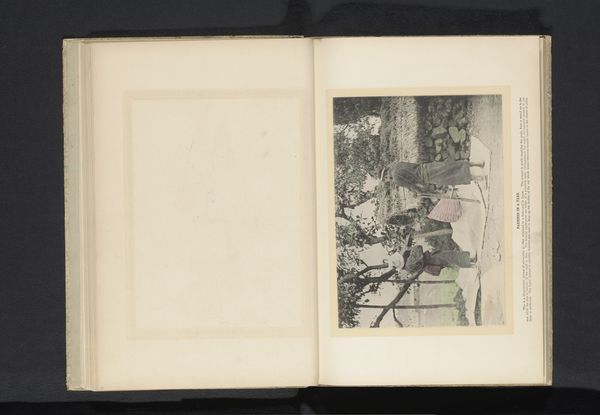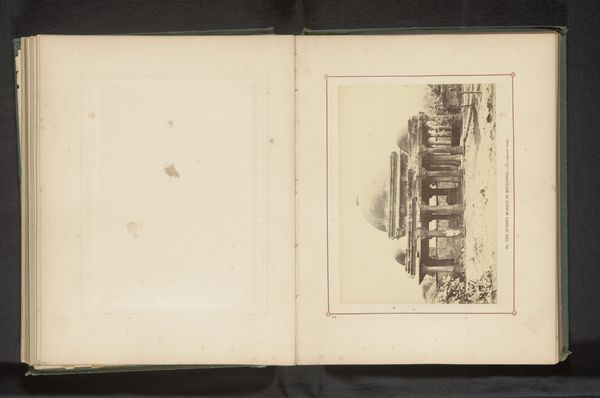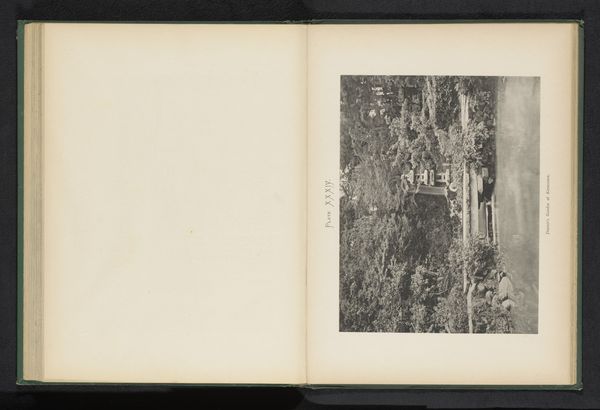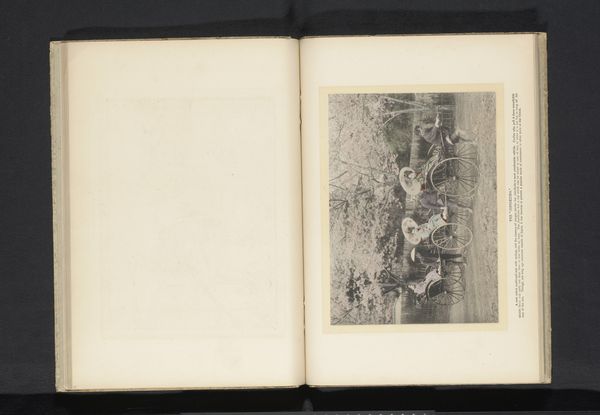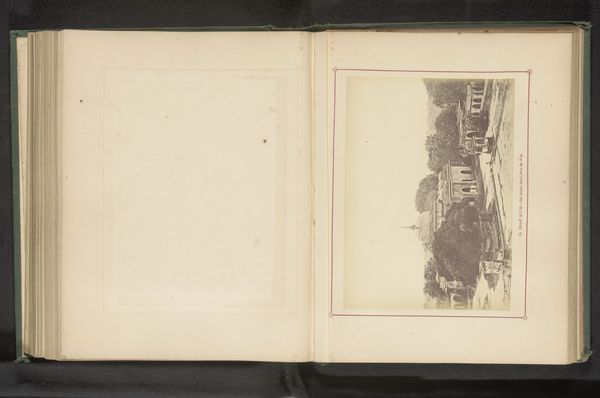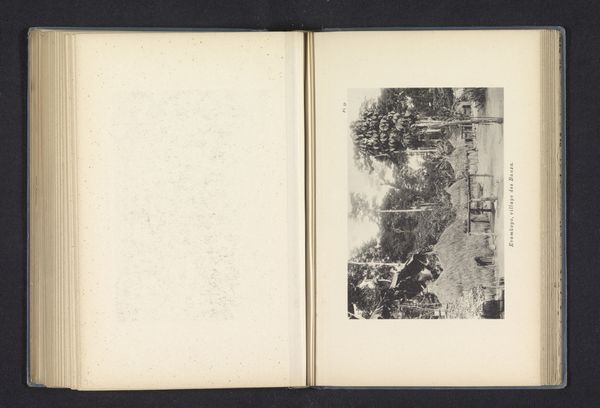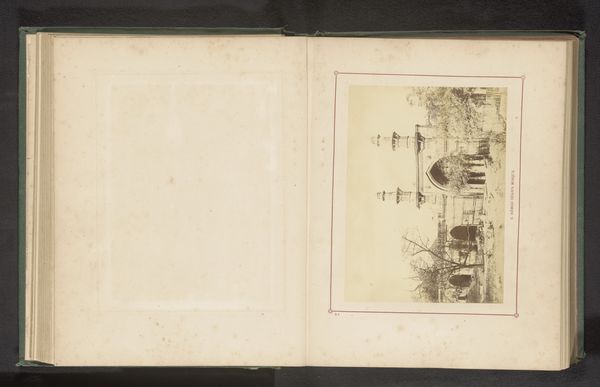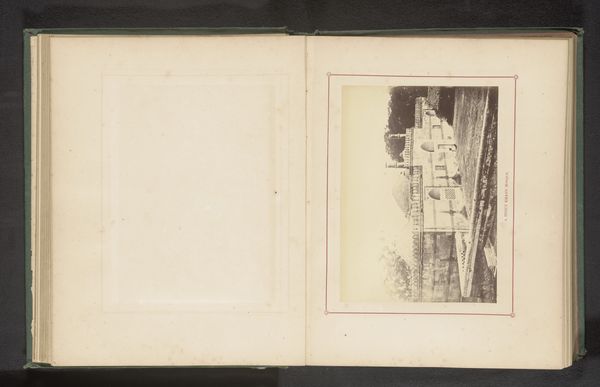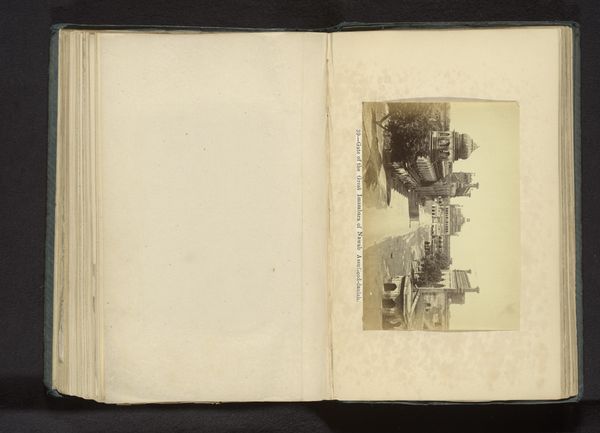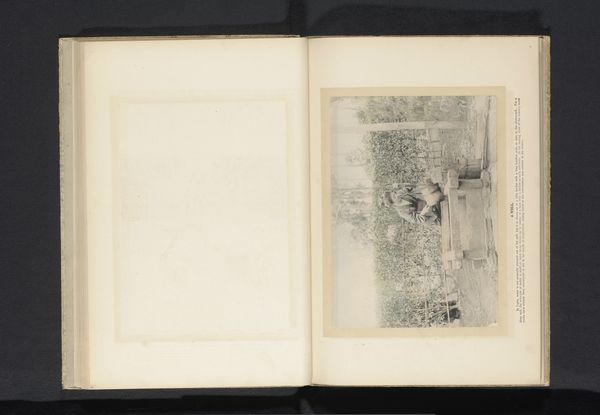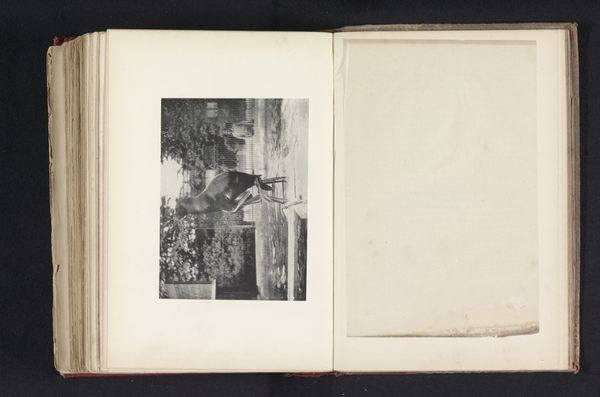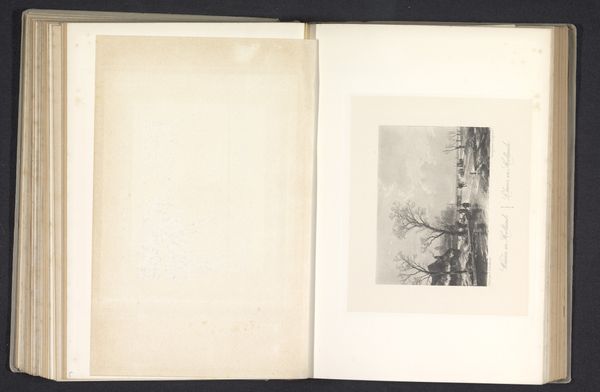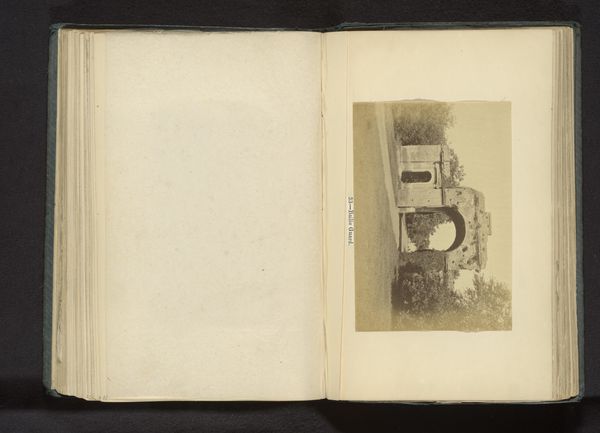
Dimensions: height 167 mm, width 230 mm
Copyright: Rijks Museum: Open Domain
Curator: Looking at this photograph titled "Verkoper van bloemen," which translates to "Flower Seller," from before 1900, I’m struck by how beautifully it's preserved in this album. Editor: It’s haunting, isn't it? That ghostly quality of old albumen prints always gets me. It's as if we're peering into a memory, fragile and faded. Curator: Exactly! There’s a timeless quality. The image shows a flower seller with their cart, likely in a European city, if I had to guess, though we can’t be entirely sure, which brings us to consider how this scene would likely depict a whole series of intersections—of class, gender, labour—but they remain unsaid, almost stubbornly resisting our view. Editor: The vendor seems almost swallowed by the scene. The very precariousness of such economic means in late 19th century really does set the stage to a deeper analysis here: poverty, urbanisation and industrial exploitation immediately spring to my mind! Curator: Perhaps, but I wonder if focusing on such heavy concepts, we'd miss the almost impressionistic touch that it holds? Even within the technical constraints, this piece whispers, rather than shouts. The beauty feels subdued, intimate. Editor: Intimacy can be deceiving. Don’t you find a kind of performative resilience within its quiet depiction? Flower selling for many women would become tied into acts of daily survival. Here is not just any merchant in operation, here we are witnessing the image of a human, that happens to be a women, doing everything she can to keep going and thrive against adversity! Curator: That is also something to reflect on, I'm compelled to wonder about the unseen, to wonder at their dreams and worries as they weave through the market square. To have that embodied here, as evidence, decades into the future. Amazing, wouldn't you agree? Editor: Definitely. It prompts questions about their agency and the broader socioeconomic conditions shaping their existence in a very complex system. Curator: Ultimately, what sticks with me is that echo of a past, resonating faintly, inviting us to pause. Editor: Yes, and reminding us that history is alive, carried in every crack and faded hue.
Comments
No comments
Be the first to comment and join the conversation on the ultimate creative platform.
